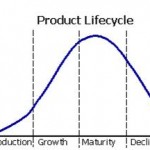In the last few weeks no fewer than five new biochar projects/companies have come to my attention that have the capability, or are in fact are already producing thousands, or in a few cases, tens of thousands of tons of biochar annually. Though biochar is still in the introduction phase of its life cycle in the US, things are definitely beginning to change.
From a carbon sequestration perspective, this seems like an exciting and very desirable development given the current imbalance of carbon in the atmosphere. From a consumer perspective, this should be great news as increased supply generally translates in to decreased prices. But from a market readiness perspective, I wonder if the collective we are ready to absorb (or perhaps I should say adsorb! – pardon the biochar geek humor) the barrage of biochar that may soon be upon us?
The level of market awareness about the benefits of biochar is still very, very low. The level of understanding about the nuances of different types of biochars and their related characteristics and impacts is a mere fraction of that already small number. Not only do most potential users (and in some cases I would argue biochar sales reps) not understand these nuances, but when I read some of the marketing materials for different biochars, it seems that every single biochar out there is not only the best of the best, but they are all capable of providing any and all benefits ever associated with biochar in a particular crop trials. To those that have been entrenched in the world of biochar for even a few years, this type of hype makes one more than a little nervous for the long term prospects of a biochar market. When you look at where we are in the biochar hype cycle and overlay that with the biochar product life cycle, you can see the potential for hype to throw biochar off the typical product life cycle if biochar claims are not shown to reflect reality.
I want to see biochar succeed just as much as anyone, probably more, but for a sustainable market to develop, biochar should be treated as the complex material that it is. Like its far more glamorous carbon cousin the diamond, which is evaluated using various criteria (e.g. cut, color, clarity, and carat), each different type of biochar should similarly be understood and valued for its specific characteristics. Similar to ‘marrying’ the right diamond to the right woman, the most desired qualities can vary depending on the particular end us for the biochar. Meaning that the best biochar to use for improving drought tolerance may not be the same as the biochar you want to use to filter water or to remediate a brownfield, and so on.
I am a big believer in the notion that for most types of biochars (the exception is chars made from toxic substances!), there is a best end use. As an example those with high nutrients (e.g. poultry litter biochar) would be great for soil amendments; chars made from feedstock with intricate lattice structures, may be more suited to energy storage than others, etc.. Matching chars to their best end use is something that is still very much in its infancy, but it is definitely an exciting area of research!



